My family on holiday
I hope you’re still in ‘simmer’ mode for these last few drawing lessons of the Summer Drawing Project. This week you will look at ways of drawing a group of people. Perhaps it could be based on a group of your family or friends; perhaps a party or wedding photo. As last week, make the print size so it fits onto your sketchbook page. Choose one that has just a few people (I’ve worked with one of some of my family on holiday recently) and one where each figure can be seen almost as a separate silhouette. Notice how the two small children in my photo seem to disappear, but couldn't resist adding them in to one of my drawings.
So here we have brother, husband, two little ‘grieces’, niece and her husband, standing in front of the boats at Falmouth Marina.
Firstly, print your photo out a few times but no need to use special photo paper. I used four prints in these drawings to help me get shapes right. Rip the boring white borders off and glue onto a sketchbook page.
First idea – When the glue is completely dry, paint all over the print with gesso or white emulsion paint or a slightly watered acrylic paint. It’s important that you can still see the figures through the paint, so do some tests before completely covering!
Immediately you have covered the photo with the paint, grab with something blunt such as the end of your paint brush and draw into the wet paint. You won’t have long till the paint dries, so very quickly scribble around all the silhouette shapes and scribble over any shape you feel you’d like to note such as the sun glasses in this photo. There might be further drawing processes you’d like to add to this later or maybe leave it as it is.
Second idea – take another print and rip it into vertical strips. Take alternate strips and glue down in the correct order (below left) and position on two sketchbook pages. Then paint over with your gesso/emulsion/ acrylic (below right). I chose to only paint one set of strips and left the other set (on the right hand page) unpainted as I wasn’t sure what I should do next. Two thoughts below but perhaps you have different ideas?
Keep a copy of your photo nearby so you can work from it. My first idea was to draw the figures back into the strips was to use a continuous line to draw around the main visible shapes in the photo and continue them across the voids, with half an eye on the whole photo and also on the neighbouring strips. Give this line continuous a wriggly ‘character’: this allows you to go back and correct some shapes and it will still look intentional. I think these lines have given the four men an ‘ageing’ effect – hope they won’t mind!
My next idea for the unpainted strips was to ‘paint out’ the background areas of the sea in the photo so just the figures could be seen. This seemed to simplify the group of figures. My style of drawing in this one was to use just short, straight lines. Lines were drawn along the edge of the silhouettes and some internal lines such as creases and patterns of clothes. I drew these lines with a fine pen, extending the lines further than technically necessary, but adding to the character of the drawing and giving it a ‘stained glass window effect perhaps?
Third idea – to cut out the group of figures and keep both the positive and negative shapes (figures and background) as templates. (You’ll notice I didn’t bother with the legs as they seems just too complicated.) The initial stage was not successful – to use the positive cut paper shape as a template to paint a silhouette shape onto a sketchbook page with gesso, which proved far too subtle. So I used a stronger colour instead, a bright holiday sky blue, which was more successful and cheerful. This method involves putting the crayon colour (pastel, chalk or something that smudges easily) around the edge of the template and then using my finger to brush it off onto the page, holding the template firmly.The right hand image below shows the template moved slightly to show you the result on the page.
I then decided to cut away between the legs on the bottom edge and used a grey pastel to smudge the legs shapes. The image below left shows the template placed onto the smudged page. The template itself (below right) was also starting to look interesting although my husband lost his head!
Using both the positive and negative templates and the ‘rubbing’ method you can then add further layers of ‘smudged’ silhouettes.
You could separate certain figures by cutting them apart as I did. You could also use a different colour to highlight one particular shape. I did this to highlight the silhouette of my grieces and their mum, below.
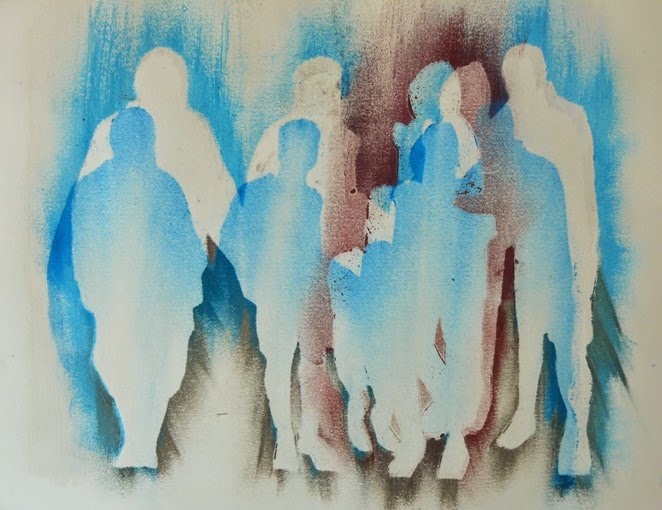 .. and then added the sunglasses for fun!
.. and then added the sunglasses for fun!
Couldn’t resist using the positive template figures on another page with a smudged negative shape. The image of this page, below, shows the figures glued down but just in the centre of each figure to allow the slight curl of the template shape to show its shadows.
You can go on and on of course, perhaps combining linear drawing with the template method. The sketchbook page, below left was made by cleaning my brush of gesso on my negative template – smudging the blue pastel off as well as the gesso – waiting for another drawing perhaps? Tried the blue template over the first drawing I did.
…and then added another template using lots of small lettering to build up a block of colour – with and without an added template..
You will have used a very smudgy medium so make sure to ‘fix’ it or to keep layers between your pages to stop one transferring on to the opposite page. You can by a special aerosol fixative for pastels and charcoal or use this method with a mouth diffuser to spray onto your pages. Use outdoors or in a well ventilated place.
Lesson 19 will be posted next Monday 15th September. We will be looking at ways of drawing rounded objects before the final lesson looking at drawing faces.
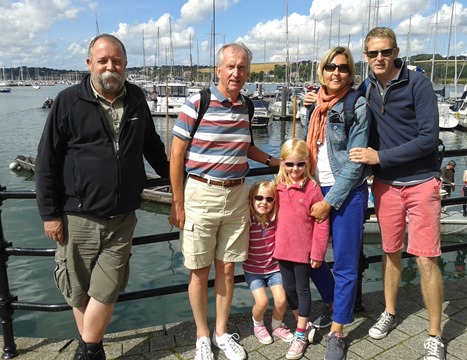

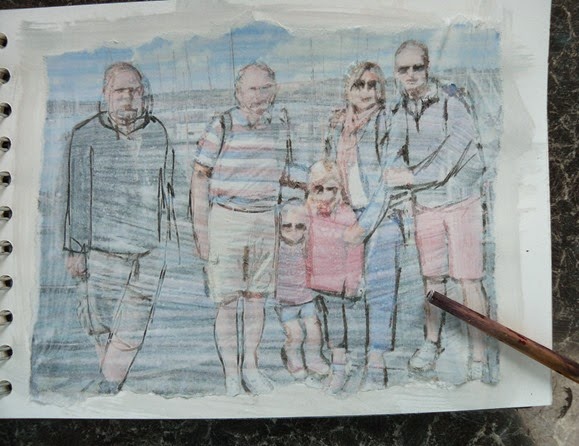


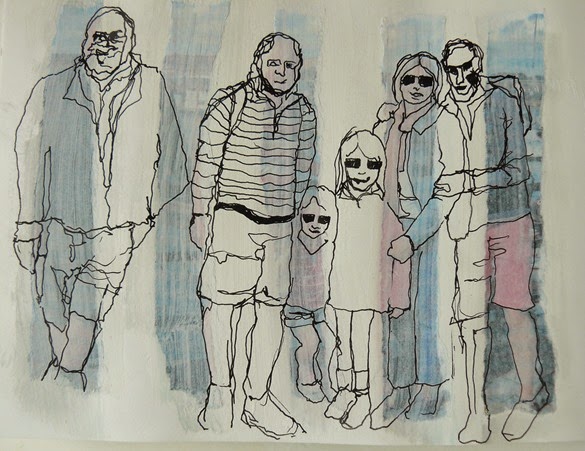
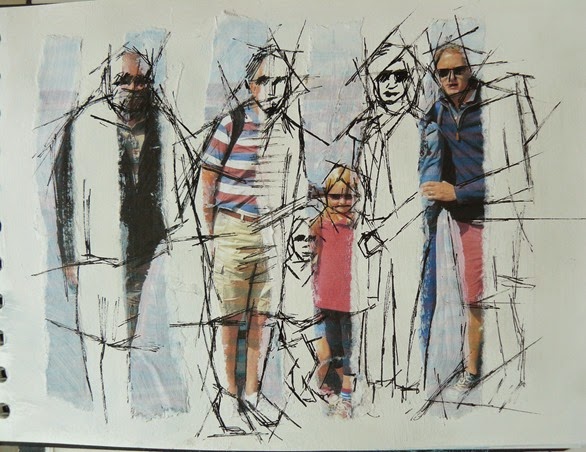
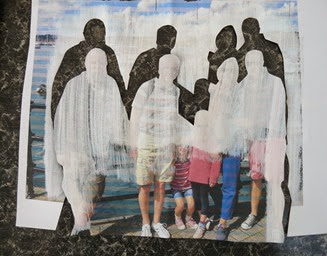
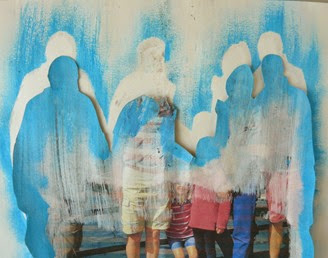
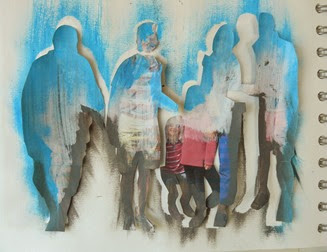
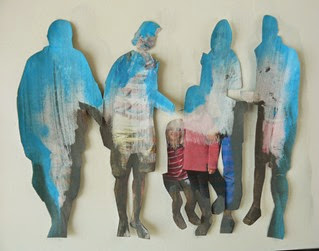
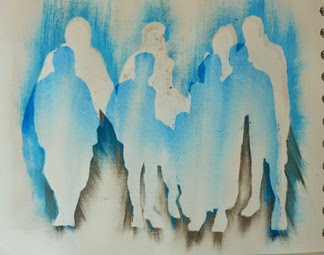
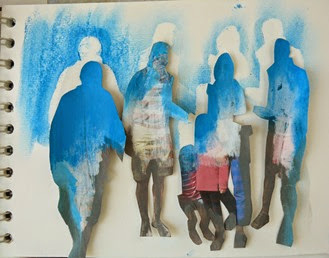
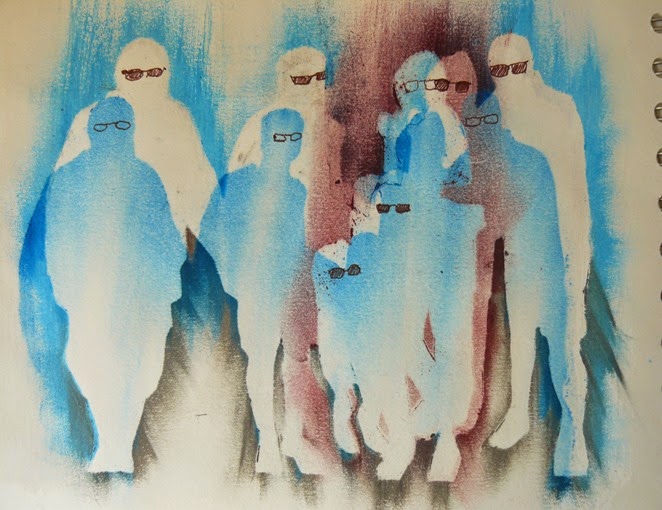
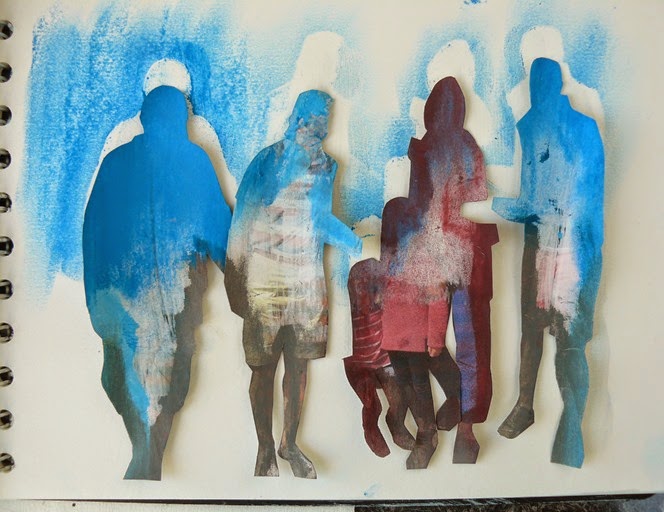
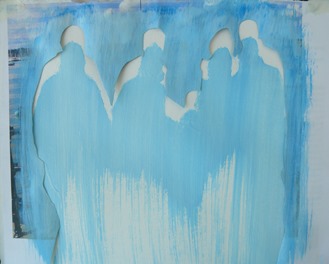
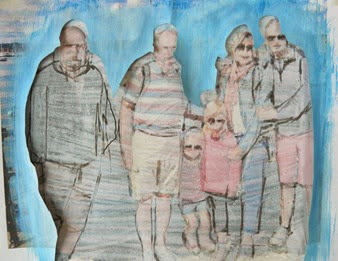
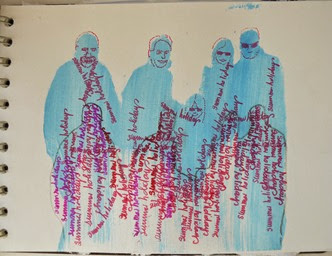
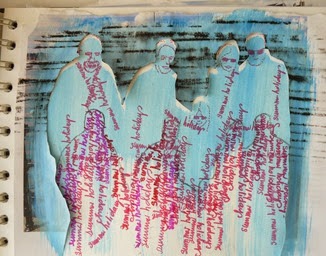
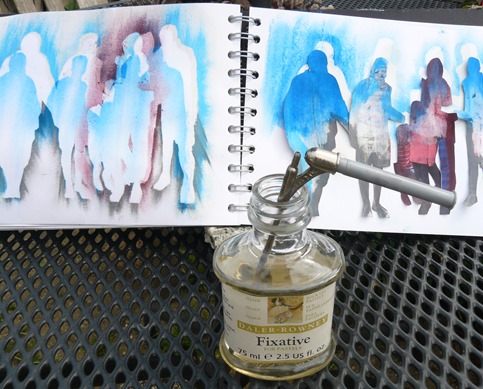
You have put so much time and effort into these lessons. They have been excellent to follow.
ReplyDeleteHow interesting techniques Siân. This makes me really regret not to have started with the Summer Drawing Project
ReplyDeleteHey keep posting such good and meaningful articles.
ReplyDelete